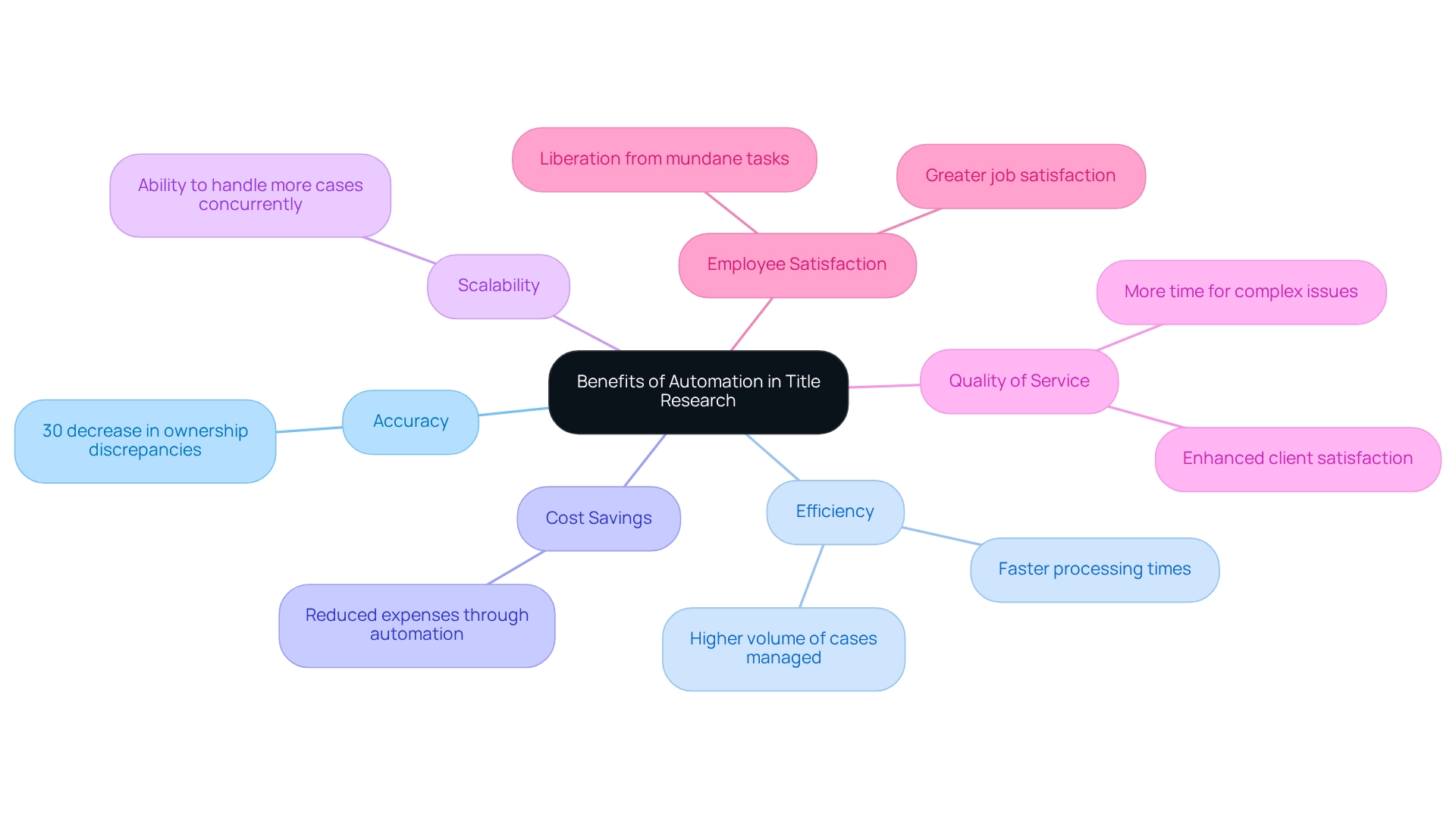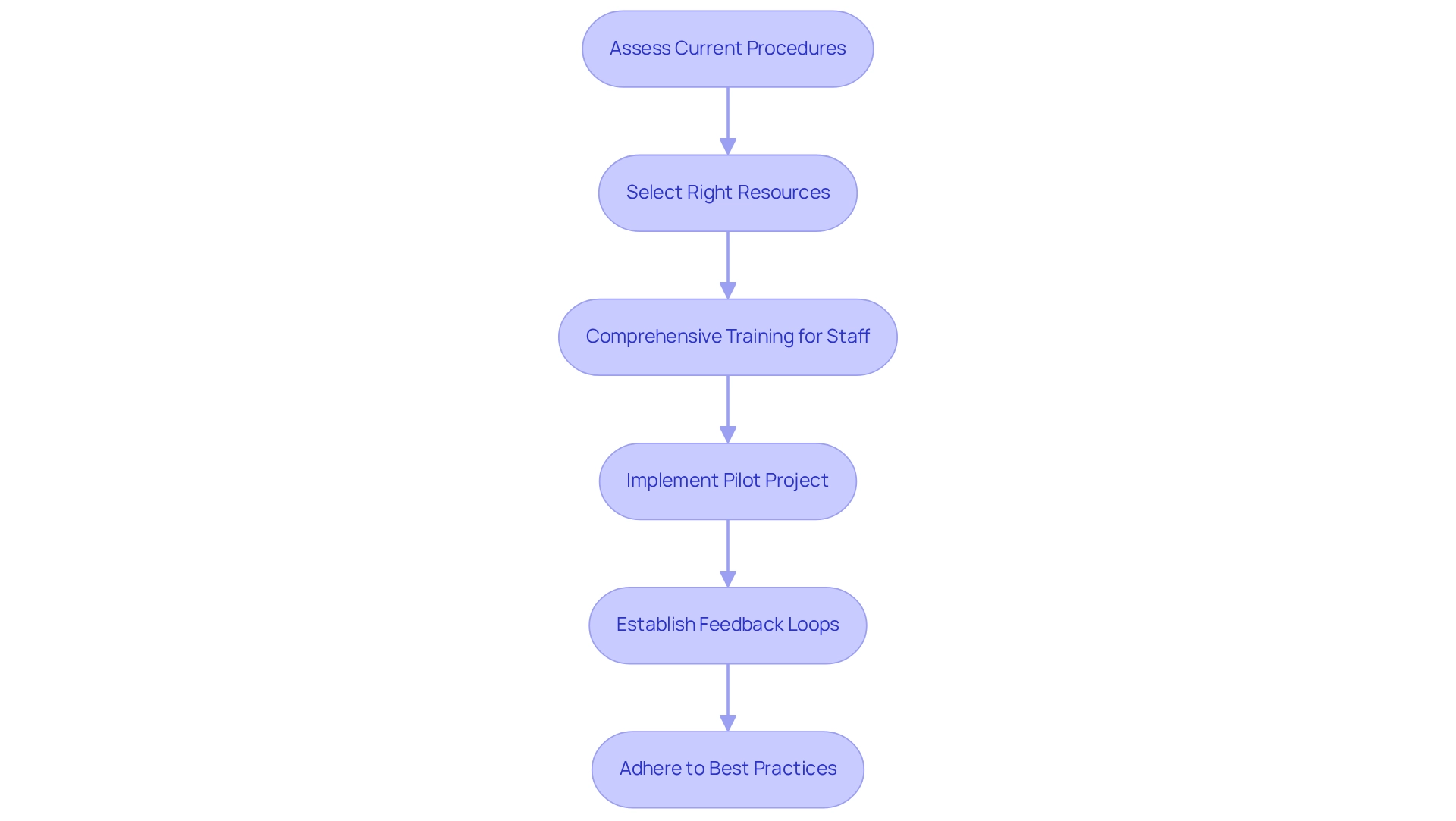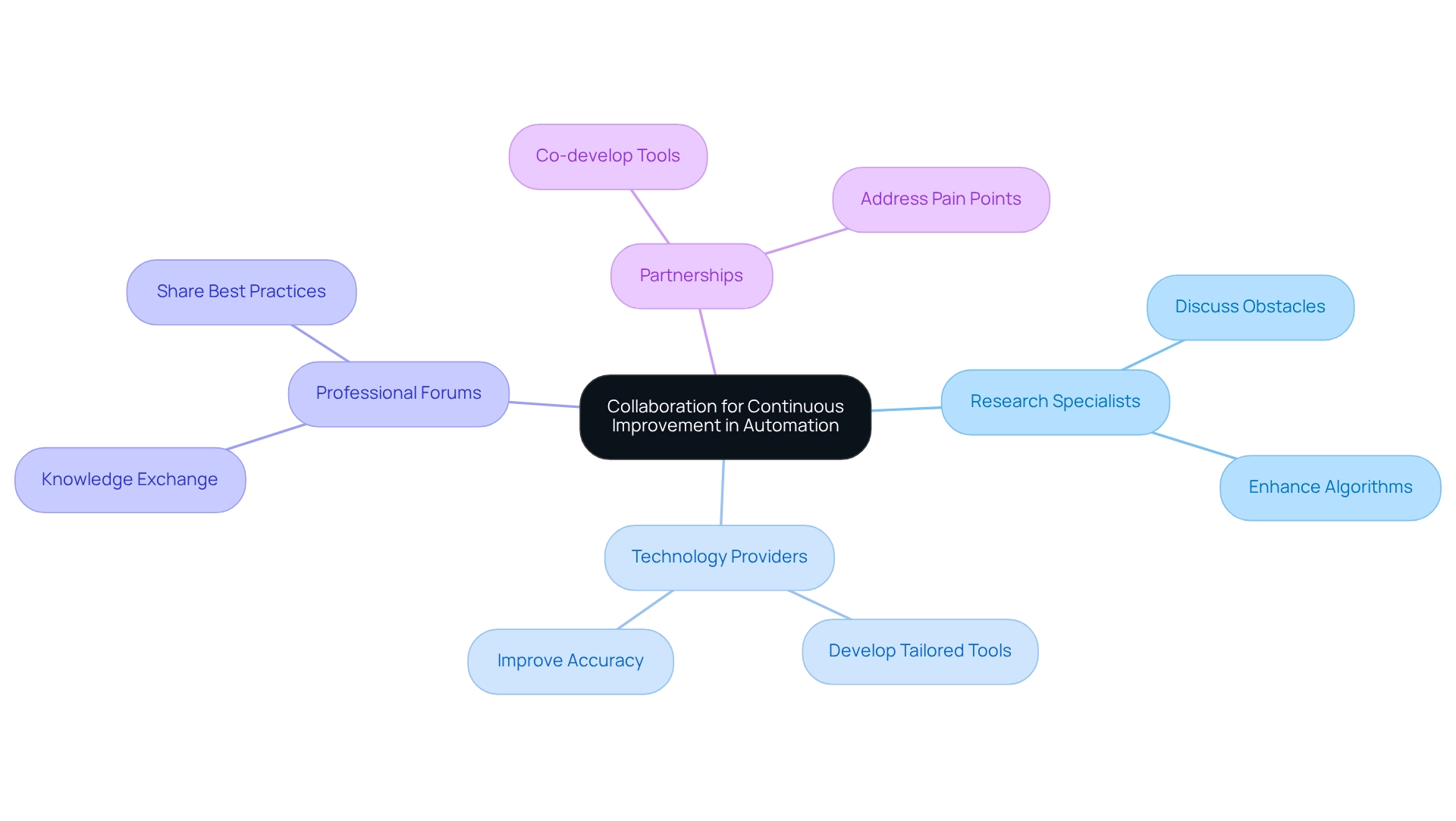Overview
Automated ownership checks in title research leverage machine learning (ML) and optical character recognition (OCR) technologies, significantly enhancing the accuracy and efficiency of property ownership verification.
The importance of precise title research cannot be overstated, as it serves as the foundation for successful real estate transactions.
However, challenges such as prolonged turnaround times and ownership discrepancies have plagued the industry.
Fortunately, these innovative tools effectively address these issues, substantially reducing errors and expediting processes.
Consequently, real estate firms can improve their operational capabilities and adapt to evolving industry demands with greater agility.
Introduction
In an era where technology is fundamentally reshaping industries, the domain of title research is experiencing a profound transformation through automation. By leveraging advanced technologies such as machine learning and optical character recognition, companies are optimizing the verification of property ownership, significantly reducing turnaround times while enhancing accuracy.
As real estate firms confront mounting demands for efficiency and compliance, it is imperative to understand and integrate these innovative tools. This article examines the benefits of automated ownership check technologies, investigates their impact on operational workflows, and underscores the necessity of collaboration between professionals and technology providers to promote continuous improvement within the field.
Understand Automated Ownership Check Technologies
Automated ownership check technologies leverage machine learning (ML) and optical character recognition (OCR) to enhance the verification of property ownership. These ML algorithms sift through extensive datasets, identifying patterns and discrepancies within document titles. Meanwhile, OCR transforms scanned materials into machine-readable text, facilitating rapid data extraction. This understanding equips researchers with the knowledge to recognize the strengths and limitations of these technologies, enabling informed selection of resources tailored to their specific requirements.
For instance, Parse AI demonstrates how these tools can effectively handle large volumes of document titles, significantly reducing the time required for ownership verification compared to traditional methods. Firms that have adopted these technologies report turnaround times for title searches that are up to 50% faster, significantly boosting operational efficiency. As evolves, the incorporation of ML and OCR not only simplifies processes but also enables companies to remain competitive in a rapidly moving field. Leading figures, such as Chirag Bharadwaj, , emphasize that 'generative AI is set to significantly change the real estate sector by improving efficiency, customizing customer interactions, and opening new paths for revenue.' This underscores the necessity of adopting these advancements.
Furthermore, as real estate companies navigate regulatory compliance and data security, it is crucial to note that they must adhere to regulations and standards to ensure data security in AI applications. The implementation of tools for automated ownership checks becomes increasingly vital in this context. By promoting a culture of ongoing learning and utilizing accessible training resources—such as those highlighted in the case study on 'Training and Resources for AI Implementation'—companies can establish a strong foundation in AI, ensuring they leverage the full potential of these innovations. This proactive approach not only enhances operational capabilities but also positions firms to effectively adapt to the evolving demands of the industry.
Leverage Benefits of Automation in Title Research
The incorporation of automation in document research significantly enhances accuracy, efficiency, and cost savings. Automated systems minimize human error by standardizing data entry and analysis, which is crucial for legal documentation. For instance, a company that utilized tools for automated ownership checks experienced a remarkable 30% decrease in mistakes related to ownership discrepancies. This improvement not only boosts accuracy but also accelerates processing times, enabling title researchers to manage a higher volume of cases concurrently. In a competitive landscape, such scalability is essential, as faster turnaround times can greatly influence client satisfaction and retention.
Moreover, by automating routine tasks, professionals can devote more time to complex issues that require human judgment, thereby elevating the overall quality of service delivered to clients. As industry specialists observe, the transition towards mechanization not only streamlines operations but also fosters a more engaged and productive workforce, ultimately benefiting both employees and clients alike. Additionally, as Amit Ray mentions, "As artificial intelligence increasingly permeates the world, greater emotional intelligence must be integrated into leadership," emphasizing the necessity of balancing technology with human supervision. Furthermore, the case study titled "" illustrates that investing in automated systems is not solely focused on reducing expenses; it enhances the quality of work and liberates employees from repetitive tasks, resulting in greater job satisfaction.

Integrate Automation Tools into Title Research Workflows
To efficiently incorporate technological solutions into title research processes, organizations must adopt a methodical strategy. Begin by assessing current procedures to pinpoint repetitive tasks suitable for mechanization. Selecting the right resources is crucial; for example, Parse AI excels in document analysis, while other options may cater to data management or client communication needs. A recent statistic reveals that 62% of participants reported that between 1% to 20% of their manual processes have transitioned to digital, underscoring the growing trend toward mechanization within the industry. Comprehensive training for staff is essential to maximize tool utilization. Implementing a phased strategy minimizes disruptions; starting with a pilot project allows teams to acclimate gradually. As C. SILVARES states, "Best practices are procedures shown by research and experience to produce optimal results that are established or proposed as a standard suitable for widespread adoption." Establishing regular feedback loops is vital for refining processes and addressing challenges that may arise during integration. Moreover, on business process streamlining emphasized the lack of a standardized framework but acknowledged best practices that can aid organizations in their efforts. By adhering to these best practices, organizations can significantly enhance operational efficiency and elevate service delivery.

Collaborate for Continuous Improvement in Automation
in automation demands active collaboration between research specialists and technology providers. Engaging in consistent discussions about obstacles and achievements fosters the development of tools for automated ownership checks that are tailored to the sector's specific requirements. For instance, insights from designation researchers can steer improvements in machine learning algorithms, enhancing their accuracy in identifying ownership discrepancies.
Furthermore, participating in professional forums and workshops facilitates knowledge exchange and the enhancement of best practices. Organizations should also contemplate forming partnerships with technology firms to co-develop tools for automated ownership checks that address particular pain points in title research.
By cultivating a culture of collaboration, the industry can ensure that tools for automated ownership checks remain relevant and effective, ultimately benefiting all stakeholders involved.

Conclusion
The adoption of automated ownership check technologies signifies a pivotal evolution in the title research landscape, integrating advanced solutions such as machine learning and optical character recognition. These tools not only streamline the verification of property ownership but also dramatically enhance accuracy and efficiency, enabling firms to maintain a competitive edge in a rapidly changing market. By comprehensively understanding both the capabilities and limitations of these technologies, title researchers can make informed decisions that align with their operational needs.
As the advantages of automation become increasingly apparent—reduced errors and accelerated processing times—the imperative of integrating these tools into existing workflows cannot be overstated. Organizations that embrace automation can effectively scale their operations, allowing professionals to concentrate on complex issues that necessitate human insight, thereby elevating overall service quality. Investing in technology transcends mere cost-saving measures; it represents a transformative strategy that enhances employee satisfaction and client retention.
Furthermore, collaboration between title research professionals and technology providers is essential for the continuous enhancement of automated systems. By engaging in dialogue and sharing insights, the industry can develop tailored solutions that address specific challenges, ensuring that automation tools evolve in tandem with industry needs. As the real estate sector adapts to new demands, a steadfast commitment to innovation and collaboration will be crucial in harnessing the full potential of automation, ultimately leading to a more efficient and effective title research process.
Frequently Asked Questions
What technologies are used in automated ownership checks?
Automated ownership check technologies leverage machine learning (ML) and optical character recognition (OCR) to enhance the verification of property ownership.
How do machine learning algorithms assist in ownership verification?
ML algorithms sift through extensive datasets, identifying patterns and discrepancies within document titles, which aids in the verification process.
What role does optical character recognition play in this context?
OCR transforms scanned materials into machine-readable text, facilitating rapid data extraction for ownership verification.
What are the benefits of using these technologies for ownership verification?
These technologies significantly reduce the time required for ownership verification, with firms reporting turnaround times for title searches that are up to 50% faster compared to traditional methods.
How do automated ownership checks impact operational efficiency in real estate?
The incorporation of ML and OCR simplifies processes and boosts operational efficiency, enabling companies to remain competitive in a rapidly evolving real estate landscape.
What is the perspective of industry leaders on the impact of generative AI in real estate?
Industry leaders, such as Chirag Bharadwaj, emphasize that generative AI is set to improve efficiency, customize customer interactions, and open new revenue paths in the real estate sector.
What is important for real estate companies regarding data security and compliance?
Real estate companies must adhere to regulations and standards to ensure data security in AI applications, making the implementation of automated ownership checks increasingly vital.
How can companies establish a strong foundation in AI?
Companies can promote a culture of ongoing learning and utilize accessible training resources to leverage the full potential of AI innovations, enhancing operational capabilities and adapting to industry demands.




